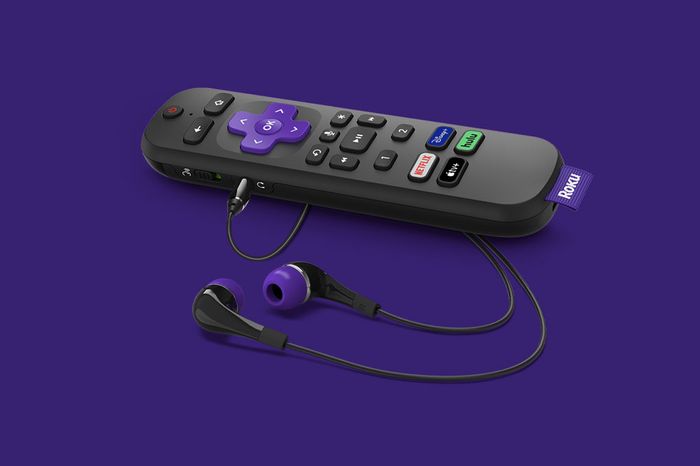
When I heard the news last week that Netflix had gobbled up TV rights to future Sony Pictures films, two thoughts popped into my head almost immediately: “That makes sense,” followed quickly by, “Is that all?” I’m not trying to troll here: Anytime a major studio licenses its theatrical output to a pay-TV platform in exchange for hundreds of millions of dollars — perhaps as much as $1 billion, per multiple reports — it qualifies as a significant development. The agreement is also clearly important for Netflix, assuring it a steady supply of recent theatrical releases to supplement the dozens of feature films it produces for itself. It’s a big deal.
But for years now, people in Hollywood (and on Wall Street) have expected that Sony — the biggest independent studio out there — would decide to give in and sell itself to a bigger player. This feeling is not rooted in any concrete evidence Sony wants to sell; just the opposite. Sony execs have signaled they’re more than happy to go it alone, seeing an advantage to staying single even as others (like Viacom and CBS, or AT&T and Time Warner) have gotten hitched. That hasn’t stopped endless speculation, as well as folks trying to game out which entertainment or tech conglomerate would most benefit from picking up Sony. I’m guilty of doing just that: For years, I’ve thought Sony would be something of a slam-dunk purchase for Netflix.
Unlike Time Warner or NBCUniversal, Sony doesn’t own any major U.S. broadcast or cable networks, local TV stations, or a big general-interest streaming platform. But that’s actually a good thing for Netflix, since those are all assets which don’t really fit into its core mission. What Sony does offer, however, is a deep film and TV library, filled with thousands of playable hours of content and all sorts of intellectual property just waiting to be turned into new TV shows and movies — everything from Spider-Man and Charlie’s Angels to Seinfeld and The Nanny. All the Norman Lear shows, such as All in the Family and Good Times, are also owned by Sony, as are classics such as Bewitched, The Partridge Family, and Party of Five. Sony also controls tons of studio space in the Los Angeles area, much coveted in the Peak TV era, when literally hundreds of shows and movies are in production in any given week and looking for places to shoot.
Instead of buying Sony, Netflix seems to have settled on leasing some of its biggest assets. Back in 2019, for example, the streamer agreed to pay the studio upwards of $500 million for the rights to the aforementioned Seinfeld. (It will exit Hulu by the end of this year.) Meanwhile, last week’s output deal will give Netflix dozens of new movies from Sony just as the former’s ability to buy from outside suppliers is likely about to be further limited by Universal and Paramount looking to put more of their movies on their in-house streaming platforms. (Disney clawed back the rights to its movies a couple years ago, and Warner Bros. has long funneled its films to HBO, and now HBO Max.) While not as sexy as an outright purchase, by making strategic deals — instead of going for the whole enchilada — Netflix gets some (though not all) of the best parts of Sony, but without the headache of figuring out how to absorb the rest of its business.
One source I spoke to this week told me that a Netflix purchase of Sony probably would have made more sense five or six years ago, before Netflix got as big as it is today. Circa 2015, Sony’s massive production lot — and business infrastructure — could have proven beneficial to a company which was still in the early stages of building its studio operation and programming Death Star. Sony’s holdings in the unscripted business might also have helped Netflix build its reality TV portfolio. But Netflix has now scaled up massively across almost all genres, and it has found studio space elsewhere in Hollywood. So while there might still be some upside to a Netflix purchase of Sony, the benefits aren’t nearly as clear as they might once have been. None of this rules out Netflix ultimately absorbing the rest of Sony, of course, but that now seems a lot less likely to happen any time soon.
Prime Number: Amazon Passes the 200 Million Mark
In his final letter to shareholders as CEO, Amazon’s Jeff Bezos Thursday announced a major milestone: The company’s Prime subscription program — which includes access to Prime Video — now has more than 200 million subscribers around the globe, he said. That’s an increase of around 50 million since the last time the company revealed membership stats in January 2020, and twice as many subscribers compared to April 2018, when Amazon said Prime had reached 100 million members. No doubt Prime’s numbers were helped a lot by the coronavirus pandemic, since free one- and two-day shipping comes standard with the program. But Prime Video is a big part of the membership offering, too, and while we don’t know how many of the 200 million Prime subscribers regularly engage with Prime Video content — or engage at all — it’s a safe bet its movies and TV shows are responsible for at least some of that growth. If it weren’t, it’s doubtful Amazon would continue to keep spending billions on content for the platform.
But even if you assume a big chunk of Amazon Prime members never or rarely fire up Prime Video programming, having a global base of 200 million homes puts the streamer on equal footing with streaming-only Netflix, which passed the same number a few months ago. That’s important for Amazon Studios chief Jen Salke and her team, who can use the stat to lure showrunners and talent to the platform. Obviously, Amazon’s big checks and resources have long meant Prime doesn’t need to beg folks to work for it, but in competitive situations for hot projects, being able to argue your platform is as big as the giant that is Netflix certainly doesn’t hurt. These numbers are also a boost for Amazon’s free ad-supported streamer IMDb TV, which is bundled into Prime Video (in addition to being available as a stand-alone app). Advertising on IMBb TV programming probably just got a bit more expensive.
Apple TV+ Does the Roku
In case you missed it earlier this week, Roku made some updates to its product line, tweaking its operating system and rolling out a couple of new products. But as I reported Tuesday, the most interesting development was that new Roku remote controls will now feature a button which takes users directly to Apple TV+. Apple almost surely paid for this bit of promotion, but it’s a smart investment: Roku is the dominant streaming-device maker in the U.S. (though Amazon’s Fire TV is right up there), and millions of consumers will now be reminded of Apple TV+ every time they pick up their remotes.
And while I don’t think it has ever seriously been in doubt, Apple’s decision to spend money with another streaming company also underscores the tech giant’s commitment to TV+. Some media and Wall Street observers hit Apple TV+ hard in the first few months following its launch, but as I wrote back in February, the platform is actually doing very well, at least from a programming perspective. Ted Lasso keeps notching awards nominations and wins, and the long-tail of buzz for shows such as For All Mankind and even Servant continues to grow. I’ve also lost track of all the major series and talent deals the streamer has announced in recent weeks. Getting a button on the Roku remote control is ultimately a very tiny matter for a company as big as Apple, but symbolically, I think it’s another signal the TV+ platform isn’t going anywhere. (That said, I will continue to pray Apple revamps the absolutely awful remote control which comes with its own Apple TV device. Maybe next week’s Apple event will bring some good news?)
And while we’re on the topic: Amazon’s aforementioned announcement about Prime’s reach really ought to inspire Apple to make a similar declaration about TV+. Apple now bundles TV+ with other services, under the Apple One banner, but more importantly, Apple has been making TV+ available to hundreds of millions of people for free since the streamer launched in November 2019. Some skeptics argue those who access the platform through free offers somehow don’t count because they’re not directly paying for the service. But most folks don’t directly pay for Prime Video, either (though it is available as a stand-alone service, it’s not much cheaper than the bigger Prime offering). It is still important that 200 million people have access to Prime Video via their Prime subscriptions. Similarly, Apple should make sure Hollywood knows and understands just how broadly distributed Apple TV+ is around the world, even if Apple isn’t directly monetizing all of those users (and is actually underwriting many of them). The buzz surrounding Apple TV+ would be amplified if the company also made it clear these projects are likely getting streamed by many millions of people around the world.


